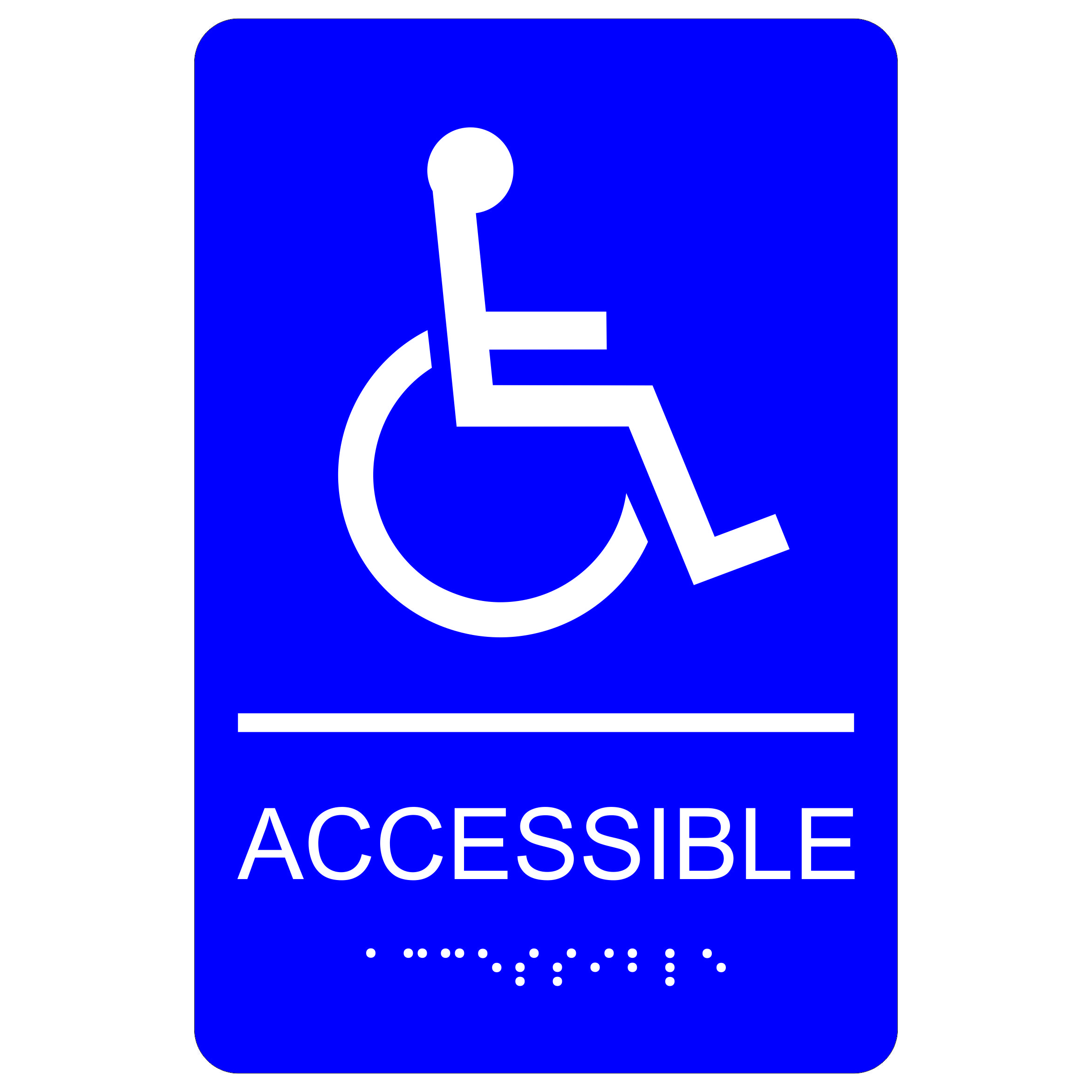Exploring the Key Attributes of ADA Signs for Improved Ease Of Access
In the world of accessibility, ADA indicators serve as quiet yet effective allies, making certain that areas are accessible and inclusive for individuals with disabilities. By integrating Braille and tactile aspects, these indications break barriers for the visually damaged, while high-contrast color schemes and understandable typefaces cater to varied visual requirements.
Significance of ADA Compliance
Ensuring conformity with the Americans with Disabilities Act (ADA) is vital for promoting inclusivity and equal gain access to in public spaces and work environments. The ADA, established in 1990, mandates that all public centers, companies, and transport solutions fit people with specials needs, ensuring they delight in the very same legal rights and chances as others. Conformity with ADA standards not just satisfies legal obligations yet additionally improves a company's credibility by showing its dedication to diversity and inclusivity.
One of the vital aspects of ADA compliance is the implementation of obtainable signs. ADA indicators are designed to make sure that individuals with disabilities can easily navigate with structures and spaces. These indicators should comply with particular standards pertaining to dimension, font, color contrast, and placement to ensure presence and readability for all. Correctly carried out ADA signage helps remove barriers that people with specials needs often experience, thereby advertising their independence and confidence (ADA Signs).
In addition, adhering to ADA policies can reduce the threat of prospective penalties and lawful repercussions. Organizations that fail to adhere to ADA standards might face lawsuits or penalties, which can be both financially challenging and destructive to their public photo. Thus, ADA compliance is essential to fostering an equitable atmosphere for every person.
Braille and Tactile Components
The unification of Braille and tactile components right into ADA signage symbolizes the principles of access and inclusivity. These attributes are crucial for people who are aesthetically impaired or blind, allowing them to navigate public areas with better freedom and confidence. Braille, a responsive writing system, is crucial in giving created information in a format that can be easily perceived with touch. It is commonly positioned below the equivalent message on signs to ensure that individuals can access the information without visual aid.
Tactile elements expand beyond Braille and include elevated characters and icons. These parts are made to be discernible by touch, permitting people to identify space numbers, washrooms, leaves, and various other crucial locations. The ADA establishes specific standards concerning the size, spacing, and positioning of these tactile components to optimize readability and guarantee consistency throughout different atmospheres.

High-Contrast Color Pattern
High-contrast color design play a pivotal role in boosting the visibility and readability of ADA signs for individuals with visual impairments. These schemes are essential as they optimize the distinction in light reflectance in between text and history, making certain that signs are easily noticeable, even from a range. The Americans with Disabilities Act (ADA) mandates making use of particular shade contrasts to fit those with restricted vision, making it a vital why not try this out element of compliance.
The efficiency of high-contrast shades depends on their capacity to stand apart in numerous lights conditions, including poorly lit environments and locations with glare. Usually, dark text on a light background or light text on a dark background is utilized to accomplish optimal contrast. Black text on a white or yellow history offers a stark visual difference that assists in quick recognition and understanding.

Legible Fonts and Text Dimension
When thinking about the style of ADA signage, the choice of clear typefaces and appropriate text size can not be overstated. The Americans with Disabilities Act (ADA) mandates that typefaces have to be sans-serif and not italic, oblique, script, very attractive, or of uncommon kind.
According to ADA guidelines, the minimal text elevation should be 5/8 inch, and it ought to raise proportionally with viewing distance. Consistency in message dimension adds to a natural aesthetic experience, assisting individuals in browsing settings effectively.
Additionally, spacing between letters and lines is integral to legibility. Appropriate spacing prevents personalities from appearing crowded, boosting readability. By adhering to these standards, designers can considerably improve availability, making certain that signage offers its desired objective for all people, no matter their visual capacities.
Reliable Positioning Approaches
Strategic placement of ADA signage is essential for making the most of access and making sure conformity with legal standards. ADA standards state that signs need to be installed at an elevation between 48 to 60 inches from the ground to ensure they are within the line of view for both standing and seated people.
Additionally, indications must be positioned nearby to the lock side of doors to enable simple recognition before access. Uniformity in indicator positioning throughout a center enhances predictability, decreasing complication and improving overall customer experience.

Final Thought
ADA signs play a vital duty in advertising access by incorporating functions that attend to the requirements of individuals with disabilities. These aspects collectively foster a comprehensive setting, emphasizing the value of ADA compliance in guaranteeing equal accessibility for all.
In the world of availability, ADA signs serve as quiet yet effective allies, guaranteeing that spaces are accessible investigate this site and inclusive for people with handicaps. The ADA, passed in 1990, mandates that all public facilities, companies, and transport solutions fit individuals with handicaps, ensuring they delight in the same rights and chances as others. ADA Signs. ADA indications are developed to ensure that people with impairments can easily navigate with spaces and structures. ADA guidelines stipulate that indicators ought to be placed at a height in between 48 to 60 inches from the ground to ensure they are within the line of view for both standing and seated people.ADA indications play a crucial function in advertising availability by incorporating functions that deal with the needs of people with impairments